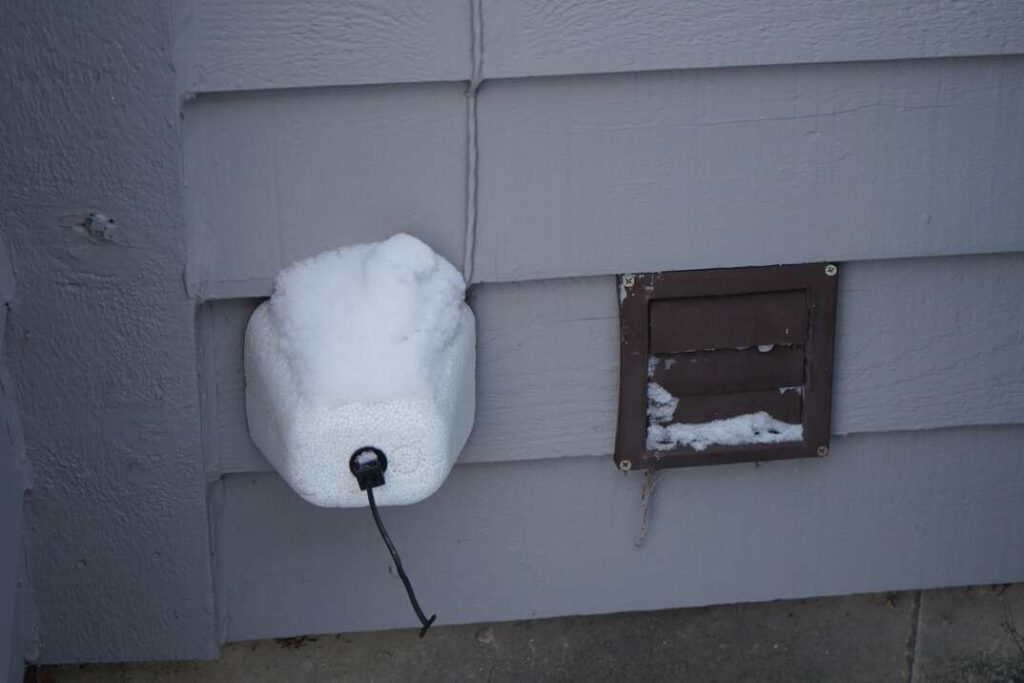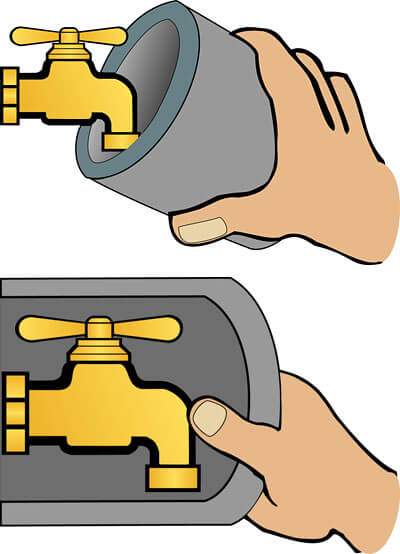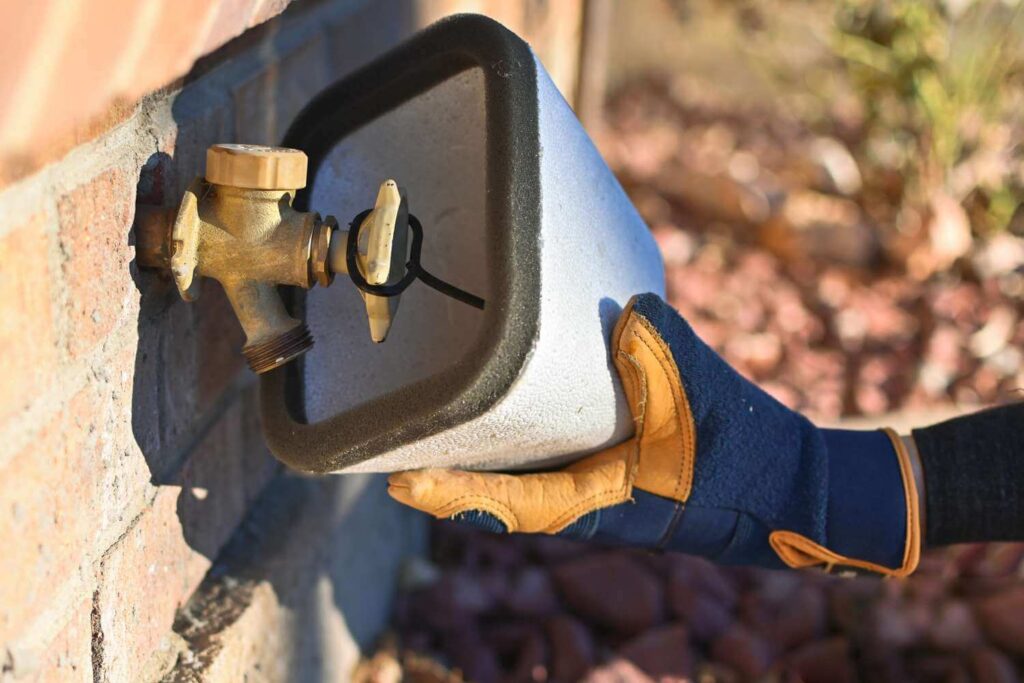A Comprehensive Guide to Installing Faucet Covers for Winter

Introduction
As the chilly winds of winter start to sweep in, homeowners must take proactive measures to protect their properties from the harsh weather conditions. One such important task is the installation of faucet covers that are essential tools that safeguard outdoor faucets from freezing temperatures, preventing costly damage to plumbing systems in winter. In this guide, we’ll walk you through a step-by-step process to properly install them and ensure the longevity of your plumbing infrastructure during the winter months.
Why Install Faucet Covers?
Before diving into the installation process, it’s important to understand the significance of faucet covers. When water freezes in winter, it will expand, exerting immense pressure on pipes and faucets. This pressure can lead to burst pipes, cracks, and leaks, causing extensive damage and costly repairs. Faucet covers act as insulators, creating a barrier between the faucet and the frigid air. By insulating the faucet, you can prevent water from freezing inside the pipes, mitigating the risk of damage. This proactive measure can save you both time and money by avoiding potential plumbing emergencies.Faucet covers, also known as faucet insulators or faucet socks, serve as protective layers for outdoor faucets during cold weather. Installing them offers several benefits:
- Freeze Prevention: One of the primary reasons to install faucet covers is to prevent freezing. In cold climates, water inside outdoor faucets can freeze, causing the pipes to expand and potentially burst. This can lead to costly repairs and water damage. Faucet covers provide an extra layer of insulation, helping to keep the temperature around the faucet above freezing.
- Damage Avoidance: Faucet covers act as a barrier against harsh weather elements, including snow, ice, and hail. They shield the faucet from direct contact with these elements, reducing the risk of damage or corrosion.
- Extended Faucet Lifespan: By protecting the faucet from extreme weather conditions, faucet covers can help extend the lifespan of the fixture. This can save homeowners money in the long run by reducing the need for frequent replacements or repairs.
- Reduced Energy Costs: In some cases, outdoor faucets are connected to the home’s plumbing system, meaning they can contribute to heat loss in the winter. By insulating the faucet with a cover, less heat is lost through the pipes, potentially leading to lower energy bills.
- Convenience and Accessibility: In areas where freezing temperatures are common, a faucet cover provides a convenient solution to protect outdoor fixtures without the need to shut off the water supply and drain the pipes.
- Easy Installation and Removal: Faucet covers are typically easy to install and remove. This means you can quickly prepare your outdoor faucets for winter and remove the covers when warmer weather returns.
- Prevents Mold and Mildew: In addition to protecting against freezing temperatures, faucet covers can also help prevent moisture buildup around the faucet. This reduces the likelihood of mold and mildew growth, which can be harmful to health.
Overall, installing faucet covers is a relatively simple and cost-effective measure to safeguard your outdoor plumbing fixtures from the potentially damaging effects of winter weather.
Step-by-Step Installation Guide

Materials You’ll Need:
- Faucet cover (available in various sizes and materials)
- Adjustable wrench or pliers
- Teflon tape (optional)
- Cloth or sponge
- Bucket
Step 1: Prepare the Area
Start by turning off the water supply to the outdoor faucet. This can usually be done by locating the shut-off valve inside your home that controls the water flow to the faucet. Once the water supply is turned off, open the faucet to drain any residual water from the pipes. This will prevent any trapped water from freezing and causing damage.
Step 2: Clean the Faucet
Use a cloth or sponge to clean the faucet thoroughly. Remove any dirt, debris, or mineral buildup from the surface. Cleaning the faucet ensures that the cover adheres properly and provides effective insulation.
Step 3: Choose the Right Faucet Cover
Faucet covers come in various sizes and materials, including foam, rubber, and plastic. Select a cover that fits your faucet snugly. It should completely cover the faucet and extend over any exposed pipes.
Step 4: Install the Faucet Cover
a. If your cover has a hinged design:
Open the cover and place it over the faucet.
b. If your cover is a foam sleeve:
Slide the foam sleeve over the faucet until it covers the entire faucet and extends over any exposed pipes.
Step 5: Secure the Faucet Cover
If your faucet cover has adjustable straps, use them to secure the cover in place. This will prevent it from being blown away by strong winds.
Step 6: Insulate Exposed Pipes (If Necessary)
If your faucet is connected to exposed pipes, consider insulating them as well. Foam pipe insulation or heat tape can be used to wrap the pipes, providing an extra layer of protection against freezing.
Step 7: Turn Off the Valve
Turning off the valve is crucial to stop the flow of water in a plumbing system. It’s essential for repairs, preventing leaks, and conserving water during maintenance or emergencies. Return to the shut-off valve inside your home and make sure it’s tightly closed. This will prevent any water from reaching the outdoor faucet, minimizing the risk of freezing.
Step 8: Optional – Apply Teflon Tape
If your faucet has threaded connections, you can apply Teflon tape to the threads before attaching the faucet cover. This will create a watertight seal and prevent any moisture from seeping in.
Conclusion

Incorporating the installation of faucet covers into your winter preparation routine is a prudent choice that can save you from potential plumbing disasters. These unassuming accessories provide a vital layer of insulation, protecting outdoor faucets from freezing temperatures and the subsequent damage they can cause. By diligently following this comprehensive step-by-step guide, you can ensure that your plumbing infrastructure remains resilient even in the harshest winter conditions. Prioritizing the correct installation of faucet covers not only preserves your plumbing system but also saves you from the inconvenience and expense of repairs in the future. As winter approaches, take proactive measures to safeguard your property and enjoy peace of mind throughout the colder months.
 ARCORA FAUCETS
ARCORA FAUCETS